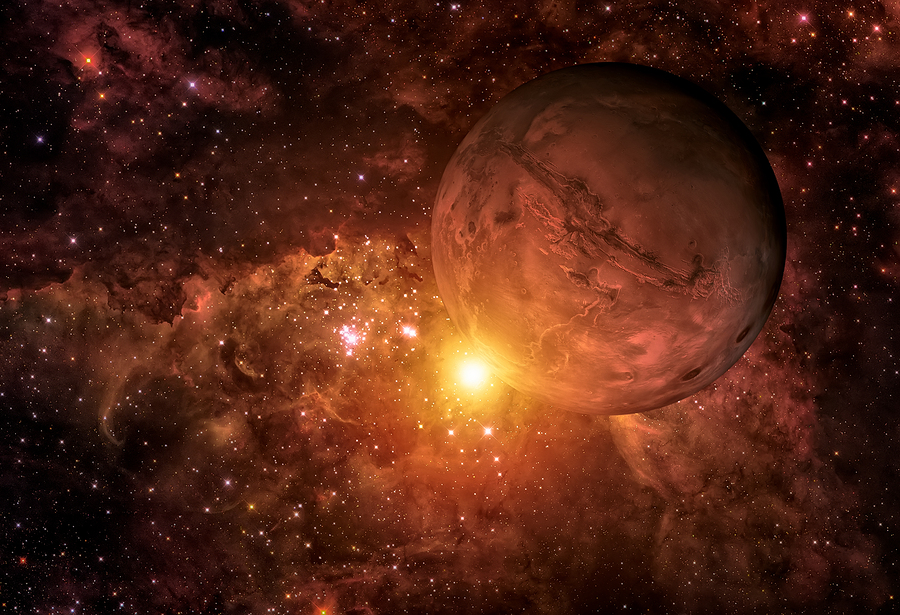The conquest of the planet Mars is well underway around the world. The United States, United Arab Emirates, the Netherlands, Russia, China… all are redoubling their energy and strategies to be the first to put a satellite in orbit around the Red Planet, to send a first unmanned mission and, the Holy Grail, to put the first man on the Red Planet. Two very different strategies appear to confronting each other. What are they? What are the problems that man will meet on this planet?
One dream, two designs
How are we to reach the Red Planet, given that it requires propelling nearly 500 tons of equipment and materials and that the trip wlil take 1.5 to 2.5 years, depending on the distance travelled (the distance between the two planets varies from 56 to 400 million kilometres)? NASA has opted for a spacecraft with three modules that will travel separately: one on Mars, one which will be an orbital base and one that would act as a shuttle. The timeline is very simple: reconnect with distant missions initially and then send an astronaut into orbit by 2030 and finally a crew by 2040. For Michael Griffin, former NASA administrator, the steps could go faster if NASA had the $450 billion that this project represents. In competition is SpaceX, partly financed by Elon Musk, who has opted for a single spacecraft (40 cabins with 2 to 3 places) with an orbital rocket able to return to the surface and is therefore reusable, considerably reducing launch costs. Musk, a staunch supporter of an early mission, does not fear loss of life, like the great navigators who explored the oceans and poles. He is therefore moving faster and plans to launch the Big Falcon Rocket in 2020, an inhabited mission in 2022 and travellers in 2024. His goal is to colonize Mars and for earthlings to take over this planet, for $500,000.
What are the risks for humans?
Although selected with the greatest care (seeking a strong personality with excellent social skills), prepared and trained with the utmost rigour, candidates will be subjected to a hard test once on Mars. First of all, cosmic rays and the absence of a magnetic field will have an impact on their DNA and nervous system, increasing the risk of cancer, complicating blood circulation and leading to serious vision disorders. Then, water could soon fail if urine and sweat filtering was affected by the calcium from bone loss in astronauts (estimated at 1% per month). With regards to air quality, the risk is far from negligible, depending on carbon dioxide scrubbers (not 100% reliable) or resupply from Earth… A final major aspect: psychology. NASA is currently testing various isolation experiences – which could last for as long as one year – to analyze astronauts’ individual and collective behaviour. The result is that conflicts are inevitable and the profiles sought must be able to withstand boredom during the 6 to 8 month crossings as well as being able for great activity once they land on Mars. Finally is homesickness – for the planet, I should say – which could be waiting for the astronauts who will lose their bearings (seasons, greenery, sea…).
At this time, this adventure has major challenges and countless unknowns. So if the conquest of Mars allows companies to perform technological feats and governments to unite their people around a more than ambitious project, the mission will be partly accomplished.
